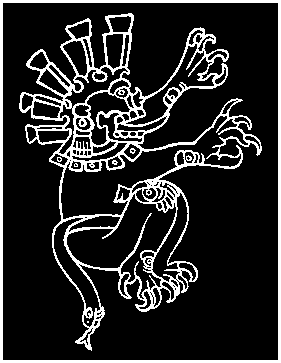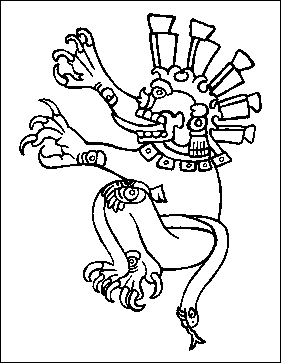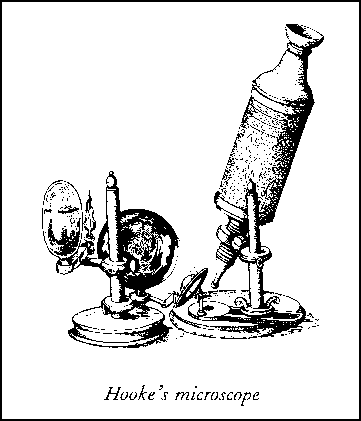The revolutionary work of Charles Dederich was an inspiration to all. Here was an alcoholic who had gone through the AA experience and then, with a few "dopefiends" --- the word they used on themselves --- had moved into a storefront in Santa Monica, creating a new and highly successful environment for cure. They policed themselves, they welcomed newcomers, showed them how to go straight, and then, out of this supportive environment, they went out and hustled business. Outside mental institutions, it was the only place that hard-core addicts could go to get cured.
It pulled from AA (and the earlier "Oxford Group") techniques of co-counseling, with the gifted amateur --- those who had been there before --- showing others how to kick the habit. Those who came to experience Synanon and praise it were legion: jazz musician Art Pepper, psychologist Abraham Maslow, inventor Buckminster Fuller, actor Steve Allen, guru Tim Leary, Governor Jerry Brown, activist Caesar Chavez.
Dederich was fat, and not very pretty, but he was smart, good with his words, wily, and playful. His history was the history of a poorly educated drunk who single-handedly created a new non-bull-shit movement. He spouted Zen, Lao T'se. Ralph Waldo Emerson, and S. I. Hayakawa. He built a working institution in record time, and got the attention of prison authorities, legislators --- Senator Thomas Dodd was an early supporter --- and the police.The unlikely influence of Hayakawa was key, for Language and Thought was a classic of its time, showed how we used language not only to express ourselves, but to hide ourselves. And in The Game --- and the multitudes of Games that the rest of us set up in imitation of Dederich's Big One --- words were the key: what we said with words, what we hid with them, how we used them to fool others.
Thousands of us started our own Games all over the country: artists, hippies, teachers, professionals, peaceniks, people who were disgusted with the lies of Modern America. We would get together --- six or eight or ten of us on a Saturday night, and, instead of smoking dope or getting drunk, we would start right in, attacking each other mercilessly, exposing fears and hates and prejudices. There were only two rules: no physical violence, and no running out the door.
I well remember my first one. One of my friends invited me over to his house. "I think you are going to be interested," he said. "It's just a few of us, being perfectly honest with each other." I was intrigued.
It started in the early evening. No one was privileged --- there were no "trained" specialists. It was freedom of speech in personal discourse. If we suspected a lie, we said so. Small talk and commonplaces were laughed out of existence. Playacting was encouraged.
Sometimes a couple of the members of the group would gang up (accusations, irony, shouting) on someone. There would be outbursts, confessions; at times, tears; at others, uncontrollable laughter. Then suddenly one of the perpetuators would become "it" --- and all would jump on him or her.
There were brutal revelations (it's amazing how much we know people just by observing them, hearing them speak), many of which were triggered by statements like: "I think you are lying." Or: "How can you say such shit and expect anyone to believe you?" Or: "When you say that, I keep hearing a sad little child speaking." The world of that room with its players was charged; each moment could create an explosion.
And when we finally broke up (at four or so in the morning), it was as if we had been taking some super-charged drug that kept us at it for so long, with such passionate emotions. We were wrung out. Most often, too, we found ourselves in a strange ecstasy, the ecstasy of being relieved of the restraints of "normal" human discourse. No wonder Dederich was so successful: he had taken psychotherapy out of the hands of the icy professionals, and by using their best techniques, empowered thousands of others. We were free to plunge into the hearts of others, to see the lies, to expose them noisily --- and come out feeling love. It was a win-win: we could pride ourselves on being searingly honest, and emerge a better (or at least a more truthful, insightful) person in the process.
§ § § Janzen has done a fine job of pulling together the facts about the rise and fall of Synanon (in truth, the rise and fall of Dederich). In thirty-three years, Dederich had managed to pull off a revolution in treatment of addicts; changed the way people communicated; created a bustling and successful business run mostly by ex-junkies. And then, starting around the mid-seventies, shortly after his wife died, he began to murder his own baby.
Janzen has done a fine job of pulling together the facts about the rise and fall of Synanon (in truth, the rise and fall of Dederich). In thirty-three years, Dederich had managed to pull off a revolution in treatment of addicts; changed the way people communicated; created a bustling and successful business run mostly by ex-junkies. And then, starting around the mid-seventies, shortly after his wife died, he began to murder his own baby.
Those who dissented were cold-shouldered, asked to leave. Newspapers and magazines that published critical articles --- as well as individual reporters who wrote them --- were sued. Those outside Synanon who made too much trouble were roughed up. A lawyer by the name of Paul Morantz, who represented parents who wanted their children "deprogrammed," was presented with a rattlesnake in his mailbox. (He was severely bitten, and, according to Janzen, it took eighteen vials of antivenin to save his life.)
In contrast to the previous fifteen years, Dederich and some of his closest associates began to give themselves hefty salaries. But the most controversial change --- outside of trying to nail dissenters --- was the decision to allow weapons. Dederich had built much of his support on the non-violent nature of Synanon. Reverence for Gandhi, Martin Luther King, and Cesar Chavez came from their pacifist stance, and Dederich fed off this, especially since he was dealing with tough ex-cons.
Over the next ten years, all fell apart. Federal agents began to examine the books; state agencies looked into the treatment of children; newspapers --- fed on the Jim Jones horror --- turned hostile; Dederich himself started boozing again. The final blow was the loss of tax-exempt status in 1989 --- at which time Synanon was, to all intents and purposes, a goner.
§ § §The author begins with a quote from V. S. Naipaul's Journey to Nowhere,
In California one constantly had the feeling of being trapped, of endlessly crawling along the surface of an outsized Möbius strip. No wonder there was so much frenzy, so many promiscuous couplings of ideas...these people had nowhere to go, nothing left to do.
His treatment of Dederich and his followers --- and those who finally rose up to put Synanon out of business --- is just, even-handed, and bemused. One comes away with a picture of a troubled man who people saw as a savior --- and perhaps his fall came from that. He was authoritarian, but at first, his power was always tempered by The Game. Anyone was free to criticize him and his decisions...at least until the big change around 1975. As Janzen says,
Alterations in the Game had a major impact on the functioning of the entire commune. Although it is true that in many ways the Game's brutal honesty upheld for a long time the highest standards of morality, when it became difficult for members to disagree with Chuck Dederich and other leaders in game formats a significant part of Synanon's system of checks and balances was lost.
He made the rules and the rules worked until the world as he saw it began to close down on him. The last few years were classically tragic. He had --- to the end --- a few followers, but they were yes-men; he rambled and drank himself into stupors; his public appearances were painful. Once he appeared on television to say that Col. Oliver North
was a "hero" and that if North every decided to run for president, Dederich would make sure that the entire Synanon community voted for him.
Still, he could and did say wonderful things, like this, a cross between W. C. Fields and Suzuki:
Childhood is convalescence from being dead for all eternity and for this reason should be gotten over as soon as possible...
But, tragically, he, like so many charismatics, envenomed the very baby he had engendered.

 The phrase that reappears in the poop-pieces for new emerging writers is, "magical realism." That was, as you recall, the one that some reviewer laid on A Hundred Years of Solitude, and now, whenever they pop another obscure writer from another obscure country, it's our label --- ignoring the fact that Magical Realism has been around ever since the days of the Furies, Chaucer, Shakespeare's witches, Don Quixote, Scheherazade, and Dickens' spooks.
The phrase that reappears in the poop-pieces for new emerging writers is, "magical realism." That was, as you recall, the one that some reviewer laid on A Hundred Years of Solitude, and now, whenever they pop another obscure writer from another obscure country, it's our label --- ignoring the fact that Magical Realism has been around ever since the days of the Furies, Chaucer, Shakespeare's witches, Don Quixote, Scheherazade, and Dickens' spooks. 
 Clearly, The Secret Life of Dust on your bedtable isn't going to contribute to a restful sleep. Especially with a creepy-
Clearly, The Secret Life of Dust on your bedtable isn't going to contribute to a restful sleep. Especially with a creepy- Holmes is a good and patient writer. She knows how to build a case and, more importantly for us, how to build a book. Like that plume they ship over twice a year from China, each part of The Secret Life of Dustflows seamlessly into the next; like a good scientific writer, she gives us the facts, lets us do with them as we will. Although, there are times when, obviously, the menace of it all exasperates her, turns her writing a bit wry:
Holmes is a good and patient writer. She knows how to build a case and, more importantly for us, how to build a book. Like that plume they ship over twice a year from China, each part of The Secret Life of Dustflows seamlessly into the next; like a good scientific writer, she gives us the facts, lets us do with them as we will. Although, there are times when, obviously, the menace of it all exasperates her, turns her writing a bit wry:
 Janzen has done a fine job of pulling together the facts about the rise and fall of Synanon (in truth, the rise and fall of Dederich). In thirty-three years, Dederich had managed to pull off a revolution in treatment of addicts; changed the way people communicated; created a bustling and successful business run mostly by ex-junkies. And then, starting around the mid-seventies, shortly after his wife died, he began to murder his own baby.
Janzen has done a fine job of pulling together the facts about the rise and fall of Synanon (in truth, the rise and fall of Dederich). In thirty-three years, Dederich had managed to pull off a revolution in treatment of addicts; changed the way people communicated; created a bustling and successful business run mostly by ex-junkies. And then, starting around the mid-seventies, shortly after his wife died, he began to murder his own baby.